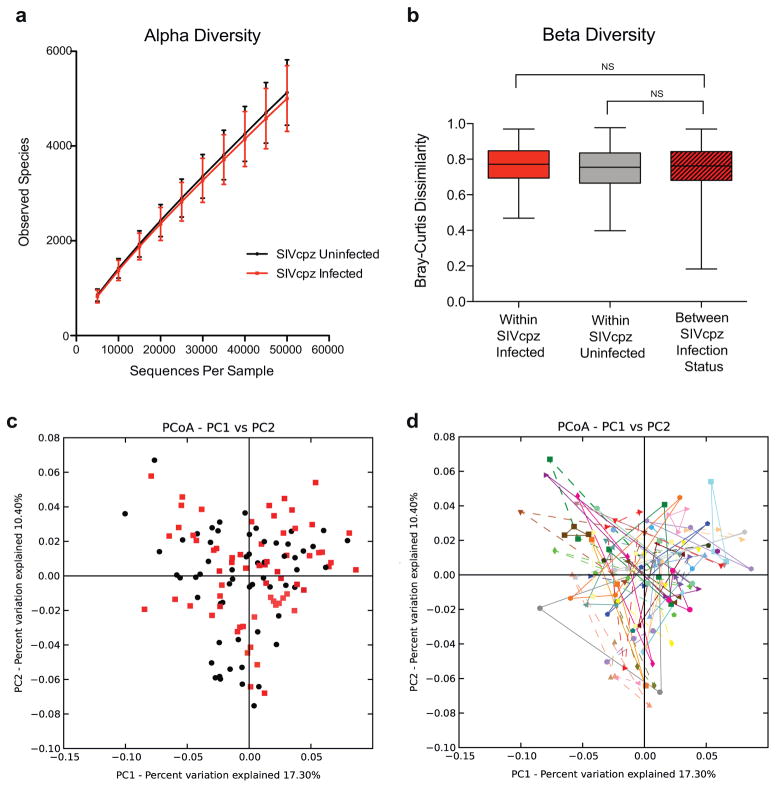Fig. 3.
SIVcpz-infected and -uninfected chimpanzees are not characterized by a distinct fecal bacteriome. (a) Absence of differences in alpha diversity. The number of observed species of rarefied (sampled at an even depth) OTUs was calculated from 16S rRNA sequencing data for fecal samples from SIVcpz-infected (red) and -uninfected (black) chimpanzees and plotted using QIIME software. Error bars indicate standard deviation. (b) Absence of differences in beta diversity. Bray–Curtis dissimilarity distances were calculated using the QIIME software for all samples from SIVcpz-infected (red) and -uninfected chimpanzees (gray), as well as between samples from SIVcpz-infected and -uninfected individuals (striped). Box plots show the median, upper, and lower quartile ranges for each comparison (indicated by brackets), with whiskers indicating minimum (top) and maximum (bottom) dissimilarities. Statistical analyses were performed using the Mann–Whitney U-test and corrected for multiple comparisons. NS, not significant. (c) Principal coordinates analysis plot (PCoA) constructed from weighted UniFrac distances indicating a lack of primary clustering of bacteriomes from SIVcpz-infected (red) and -uninfected (black) chimpanzees. (d) Identical PCoA plot as shown in (c), with fecal bacteriomes from the same chimpanzee identified by connecting colored solid (SIVcpz infected) or broken (uninfected) lines.

